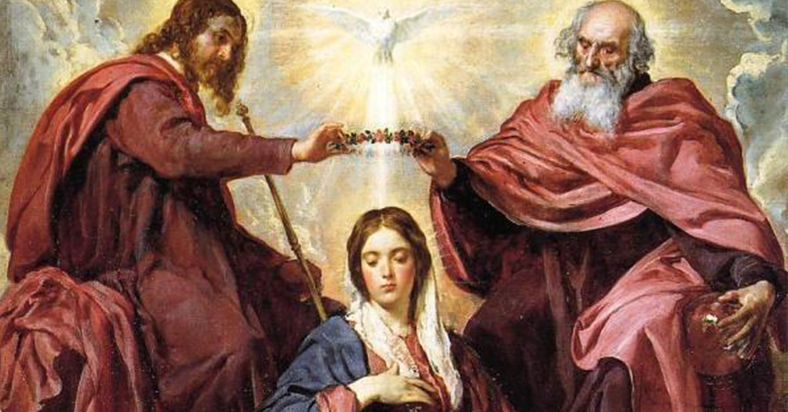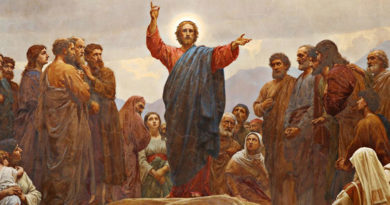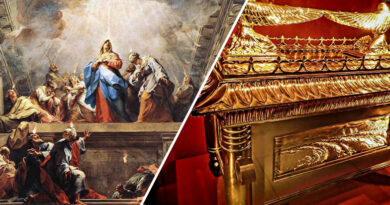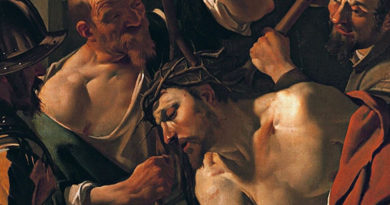Blessed Virgin Mary: The Most Beautiful Woman In History!
The Blessed Virgin is indeed full of grace. We’ll explore in this article both the biblical and apparitional accounts that prove that not only was she full of grace, but also full of beauty.
Many priests and theologians have sited that if Jesus have created his own mother, wouldn’t he create her with such bountiful grace? The answer is of course a firm “yes!”. But Mary isn’t only the mother of God. She is also, in a way “trinitarian”. She is the mother of God (Jesus), the daughter of God (the Father), and the spouse of God (the Holy Spirit).
This makes me add to the previous question: If God was to create her daughter, wouldn’t he create her to be not just virtuous but also absolutely beautiful? And if he was to create his spouse, wouldn’t he also create her to be the most gorgeous woman that there ever was and will ever be? The answer is Yes!
Mary’s beauty has actually been foreshadowed in the old testament. We can say that God has a thing for beautiful women. Not in a perverse way, but in a creative and glorifying way, a supernatural creativity where beauty can touch souls and inspire faith. The old testament has gorgeous women on which in their very characters foreshadows and predicts what kind of a woman Mary will be and what help she can provide to those who are faithful to God.
In theology, this is partly what we can describe as “Typology”, or “type of’s”. Example: Jesus is a type of Adam, or a type of Moses, or a type of King David and King Solomon, where these characters are redeemed, fulfilled, exalted, and perfected in the persona of Jesus Christ. Even the twelve apostles has their own typology. They are foreshadowed by their old testament counterparts as a type of twelve tribes of Israel, or a type of twelve district governors of Israel during King Solomon’s reign. So of course, Mary also has her own counterparts from the old testament. She’s foreshadowed by beautiful women such as Eve, Sarah, Judith, Bathsheba, and the ark of the covenant too. Of course, Mary’s virtues greatly outweighs what virtues these women had. What I’m trying to point out is, that God has used these imperfect but beautiful women to push forward with his plan to save humanity through a much more graceful and beautiful woman.
If these old testament women whom God has used as instruments to save bring about and save Israel in times of trouble were created beautiful, wouldn’t he also create Mary, the mother of our savior and advocate of all, as the most beautiful woman? She is indeed the most blessed lady who outweighs any woman’s grace and beauty.
Foreshadowing in scriptures
In scripture’s details, we are given a ton of ideas about Mary’s gracefulness and virtues. But nothing much is said in the New Testament about Mary’s physical appearance. Perhaps it’s because the Old Testament has already given us enough expectations of what she looks like through her “type of’s”. Here’s some characters that can give us an idea of her physical beauty:
1.) Eve
When God created Eve out from Adam’s side in the book of Genesis, as soon as Adam woke up from his deep sleep, he is mesmerized by the person God created for him. In his amazement, he said “This one, at last, is bone of my bones and flesh of my flesh; This one shall be called ‘woman,’ for out of man this one has been taken.” (Gen 2:23). We can definitely see Adam’s excitement and appreciation for Eve. Not just because he has found a companion in her, but also because of her beauty. Notice how he exclaims that the woman is bone of his bones and flesh of his flesh. Adam saw a one of a kind beauty in her that he was only able to see in himself as a creature made in God’s image and likeness.
It is also important to take notice that Adam calls her as ‘woman’, the same thing Jesus the new Adam calls Mary in the wedding at Cana (John 2:4) and also at the foot of his cross (John 19:26). This reminds us of what has been declared by God upon the woman, an intensified and painful childbearing (Gen 3:16) “To the woman he said: I will intensify your toil in childbearing; in pain you shall bring forth children.”. The death of Christ at the cross is the birth of the world. The pain that Mary felt before the cross is that pain of our childbirth. She became our mother at that moment as to why Jesus gave her to us as our mother (John 19:26-27).
2.) Sarai
Before God has given her the name “Sarah”, together with his husband Abraham, they were first known as Sarai and Abram. Sarai was a very beautiful woman, so beautiful that Abram feared for his life when they went to Egypt to get provisions when a famine struck his land. He believed that the Egyptians would kill him if they found out that he was this beautiful woman’s husband so he asked her to pretend that she is his sister in order for his life to be spared (Gen 12: 10-20). In his words “Please say, therefore, that you are my sister, so that I may fare well on your account and my life may be spared for your sake.”. Notice Abram says “Please”, an indication that Sarai has rule over herself and her decisions. Her free will has enable her to practice true hospitality and piety for her husband which saved his life during their stay in Egypt.
Like Mary, Sarah will only bear a child by the grace of God. She wasn’t a passive character as Abraham’s wife. As a matter of fact, God showed real interest with her. When the Lord visited Abraham, appearing as three men, He looked for her saying “Where is your wife Sarah?… I will return to you about this time next year, and Sarah will then have a son.” (Gen 18: 9 -10).
3.) Sarah
This Sarah is from the Book of Tobit. She is a young and beautiful woman as described by the Angel Raphael to Tobiah (Tob 6:11-12). He says about her “…The girl is wise, courageous, and very beautiful; and her father is a good man who loves her dearly.” In fact, she’s so beautiful that the demon of lust, Asmodeus, has fallen in love with her and kills each man that she has married on the nights of her marriages, leaving her as an untouched virgin. Her prayers are also very dear to God as they were heard in His “glorious presence”, and God grants a speedy action for her prayers to save her against the demon by the Angel Raphael.
Sarah’s character foreshadows Mary’s pure life and closeness to angels. She also shows similarities of beauty and favorable prayers to God the Father. For her eternal father is a good man who loves her dearly and would do everything to protect her from the demons who dare touch her.
4.) Judith
The Book of Judith relates the story of God’s deliverance of the Jewish people. This was accomplished “by the hand of a female”. Judith as described in the book was “…beautiful in appearance and very lovely to behold.” (Judith 8:7).
Here are also some reactions of the people when they see her:
- “…her face, which appeared marvelously beautiful to them…” (Judith 10:14)
- “…They marveled at her beauty…” (Judith 10:19)
- “…they all marveled at the beauty of her face.” (Judith 10:23)
- “No other woman from one end of the earth to the other looks so beautiful and speaks so wisely!” (Judith 11:21)
- “You are not only beautiful in appearance, but you are also eloquent…” (Judith 11:23)
I think it’s apparent that with so much more verses in this book telling the reader how beautiful she is, she was probably the most physically admirable woman in the entire Old Testament. Where ever she went, she was always adorned.
Judith was also a young widowed woman. When her husband died, she devoted herself to religious duties like fasting all the days of her life, except on sabbaths and feastdays. No one had a bad word to say about her, for she feared God greatly. In times of trouble, the people asked for her prayers. They knew her devoutness to the Lord has earned her a special privilege with her prayers – “But now, since you are a devout woman, pray for us that the Lord may send rain to fill up our cisterns. Then we will no longer be fainting from thirst.” (Judith 8:31).
It was by her prayer, beauty, wisdom, faith, and God-given strength that she was able to behead the leader of the Assyrian army poised to invade Israel. Yes, you read that right. This book might be too gory for some of us. But the battle against the evil one is spiritually gory. Thus, the Book of Judith gives us the idea of the role of Mary as one who defeats evil by the head.
Judith foreshadows the Blessed Virgin as a prayerful woman to whom we can cling on to for help in times of troubles. She is someone who figures out ways and tactics to defeat the evil one for us. She gets her strength from God Almighty and by her own hands gives a powerful strike of victory for our sake. And just as Judith was countlessly adorned for her beauty, so must we adorn the Blessed Virgin for her’s too. That’s why we say the “Hail Mary” numerous times. This powerful prayer of adoration isn’t enough to be mentioned once. For no words is enough to describe Mary’s glorified beauty and grace.
5.) Esther
Esther was a girl who came from a lowly place and whose character matures over the course of the narrative. She was recruited for the king’s harem because of her physical beauty and virginity. Scripture describes her as “…The young woman was beautifully formed and lovely to behold…” (Esther 2:7). Everybody else admired her too – “…And she won the admiration of all who saw her.” (Esther 2:15).
The king who was looking for a new queen easily fell in love with her and soon crowns her. “The king loved her more than all other women and crowned her as queen. She won his favor and good will.” (Esther 2:16-18)
At a key moment in the Book of Esther, she rises to the challenge to risk her life for the salvation of her people. At that point, she uses her status as queen from a position of personal privilege to one of power and public responsibility.
Her people, the Jews, were in trouble of mass genocide under a plot of a wicked man named Haman. Haman was a high ranking officer of the king and hater of the Jews. He created a decree that would soon terminate the lives of all Jews. But in an ironic twists and turns, Esther was able to use her privilege to ask the king to block Haman’s evil decrees to save her people. It even came to a point that the king ordered Haman to follow the wishes of Esther – “The king ordered, ‘Have Haman make haste to fulfill the wish of Esther.’” (Esther 5:5)
The king was so in love with Esther that he was prepared to give anything to her, all that she asked for. “…king said to Esther ‘Whatever you ask for shall be granted, and whatever request you make shall be honored, even if it is for half my kingdom.'” (Esther 5:6)
By this time, you would have already noticed patterns in these verses. Esther foreshadows the coming of a beautiful queen, from a lowly place to the highest courts of political power, the queenship. This queen is no other than Mary.
Like Esther, the king of this universe loves/blesses her among all women and crowns her with privilege in his kingdom. From there, whatever she petitions, will be fulfilled.
6.) Bathsheba
Perhaps one of the most known female characters in the Old Testament is Bathsheba. Scripture simply describes her as “very beautiful” (2 Sam 11:2). But her beauty was enough to make a king loose control of his desires and commit mortal sin.
King David, from the roof of his house, first saw her naked and bathing. He was obviously baffled by her beauty and made inquiries about her through his messengers. He finds out that she has a husband but still continues to push with his plans to have her in his bed. Of course, she gets pregnant and he soon gets her husband intentionally killed in a battle so he can have her as his wife. His actions was evil in the eyes of God.
There is no contest between Mary and Bathsheba when it comes to faithfulness and purity. Mary simply wins by technical knock-out. But nevertheless, Bathsheba still foreshadows Mary in the political power scene.
In the days of David, kings of that era would often have numerous wives. So to avoid a power struggle between the king’s wives of who shall be queen, queenship was reserved to the mother of the succeeding king. They called her institution the “Gebirah” or literally “Queen Mother”. So when Bathsheba’s son with King David, Solomon, succeeded him as king, she became the Queen Mother of the kingdom.
Scholars believe that Gebirahs had certain power and authority in the king’s court and would often be a trustworthy counsel of the king. The bible shows us Bathsheba’s confidence as queen. In the Book of Kings, she comes to King Solomon and asks for a favor for his brother. To which King Solomon replied “Ask it, my mother, for I will not refuse you.” (1 Kings 2:20). This gives us an idea that Gebirahs have a direct influence to the king and can ask for favors from him on behalf of those who come to her for aid.
If you believe that Jesus is our king and a legitimate successor of King David, then you better believe that Mary is our Queen Mother. To deny her queenship before Christ the King is a breech of protocol and an insubordination.
When we ask Mary to pray for us, like Bathsheba she will say “Very well, I will speak to the king for you.” (1 Kings 2:18)
Further proof in official accounts of Marian Apparitions
Our Lady of Lourdes
Bernadette Soubirous states that on July 16, 1858, when the lady appeared to her on her last visit to the grotto where her apparitions would usually be seen, she reports: “I have never seen her so beautiful before”.
Mary has a beauty that just keeps on redefining itself.
Our Lady of Pontmain
Also known as Our Lady of Hope, is the title given to the Virgin Mary on her apparition at Pontmain, France. On the evening of 17 January 1871, two young brothers, Joseph and Eugène of the Barbedette family, were helping their father in the barn when the elder, Eugène, walked to the door to look out. As he gazed at the star studded sky he suddenly saw an apparition of a beautiful woman smiling at him; she was wearing a blue gown covered with golden stars, and a black veil under a golden crown as described. The family and a neighbor came out to take a look for themselves, but only Joseph was able to immediately see her. They called a local teacher by the name of Sister Vitaline to investigate with them but neither could she see anything as well. At this point she believed that only children were able to see the Lady, so she called two young girls who had no knowledge of the apparition to see their reaction. Almost immediately the two girls, Françoise Richer and Jeanne-Marie Lebosse, described the same thing the boys were seeing. Word soon spreads about the phenomenon and crowds of villagers started gathering in prayer. Only the children of the villagers were able too see Our Lady as the adults were only able to see three stars in a form of a triangle. The Apparition had lasted about three hours and ended at about 9 o’clock in the evening.
Years later, Joseph Barbadette, who’ll later become a priest of the Congregation of the Oblates of Mary Immaculate, described her as: “Her face had the most exquisite delicacy and a smile of ineffable sweetness.”
Our Lady of Knock
In the village of Knock, County Mayo, Ireland stands a humble shrine dedicated as the site of apparition of the Blessed Virgin Mary, Saint Joseph, Saint John the Evangelist, angels, and Jesus Christ which occurred on the evening of August 21, 1879.
It was about 8 in the evening and rain was pouring. Those who witnessed the apparition stood in the pouring rain for up to two hours reciting the Rosary. They described the Virgin Mary as being beautiful and deep in prayer.
Our Lady of Fátima
In the summer and spring of 1916 in Fátima, Portugal, apparitions of angels were seen by three children. Nine-year-old Lúcia dos Santos and her cousins Francisco and Jacinta Marto. Soon, the Blessed Virgin herself started appearin to them in the beginning of May 1917. The described her as “the Lady more brilliant than the Sun” and “brighter than the sun, shedding rays of light clearer and stronger than a crystal goblet filled with the most sparkling water and pierced by the burning rays of the sun.”
Our lady is more radiant than a thousand sunrise and sunsets.
Our Lady of the Miraculous Medal
On November 27, 1830, St. Catherine Labouré reported seeing an apparition of the Blessed Virgin in an oval frame with symbols and the words “O Mary, conceived without sin, pray for us who have recourse to thee.” surrounding the margin of the oval frame. This imagery would then later be the image seen on the Miraculous Medal.
St. Catherine Labouré recalls Mary’s appearance as radiant as a sunrise, “in all her perfect beauty.”




